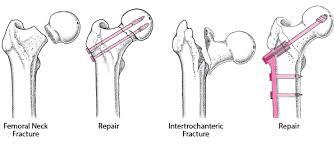Open Reduction of Fracture: A Surgical Procedure for Fracture Repair
Understanding the Procedure, Benefits, Risks, and Recovery
Fractures, or broken bones, can occur due to various reasons, such as accidents, sports injuries, or falls. When a bone is fractured, it is essential to realign the bone fragments accurately to promote proper healing and restore normal function. Open reduction of fracture is a surgical procedure commonly employed to achieve this goal.
What is Open Reduction of Fracture?
Open reduction of fracture is a surgical procedure performed under general or local anesthesia to reposition and stabilize fractured bones. It involves creating an incision near the site of the fracture to directly access the bone and manipulate it back into the correct alignment. The procedure is typically performed by an orthopedic surgeon.

Benefits of Open Reduction of Fracture
Open reduction of fracture offers several benefits in the treatment of complex or severe fractures. By directly visualizing the fractured bone, the surgeon can precisely align the bone fragments, ensuring optimal healing. The procedure allows for thorough assessment and cleaning of the fracture site, reducing the risk of infection and other complications. Open reduction may also involve the use of implants, such as plates, screws, or rods, to provide stability and facilitate proper bone healing.
Risks and Considerations
As with any surgical procedure, open reduction of fracture carries certain risks. These risks may include infection, bleeding, damage to surrounding structures (nerves, blood vessels), poor wound healing, or complications associated with anesthesia. Additionally, there is a risk of nonunion or malunion, where the fractured bone fails to heal or heals in a misaligned position, respectively. It is crucial to discuss these potential risks and complications with the orthopedic surgeon before undergoing the procedure.
The Open Reduction of Fracture Procedure
Pre-operative preparation: The patient undergoes a thorough examination, including imaging tests (X-rays, CT scans) to assess the fracture's extent and plan the surgical approach. Anesthesia options are discussed, and any necessary pre-operative instructions are provided.
Incision and bone realignment: The surgeon makes an incision near the fracture site, carefully exposing the broken bone. The bone fragments are then manipulated back into their correct position using specialized surgical instruments. The surgeon verifies the alignment through imaging during the procedure.
Stabilization and fixation: To maintain proper alignment, the surgeon may use implants, such as plates, screws, or rods, to hold the bone fragments in place. These devices provide stability, allowing for the healing process to occur correctly.

Wound closure and recovery: After the bone is realigned and fixed, the incision is closed using sutures or staples. The wound is dressed, and the patient is closely monitored during the recovery period. Post-operative instructions, including pain management, physical therapy, and follow-up appointments, are provided.
Recovery and Rehabilitation
The recovery period following open reduction of fracture varies depending on factors such as the type and location of the fracture, the patient's overall health, and adherence to post-operative instructions. Pain and swelling are common in the initial stages, and the patient may require pain medication. Physical therapy is often prescribed to restore joint mobility, strength, and function gradually.
Regular follow-up appointments with the orthopedic surgeon are essential to monitor the healing progress and make any necessary adjustments to the treatment plan. It is vital to follow all instructions regarding weight-bearing restrictions, activity levels, and rehabilitation exercises to promote optimal healing and minimize the risk of complications.
In conclusion, open reduction of fracture is a surgical procedure that plays a vital role in realigning and stabilizing broken bones. It offers several benefits in the treatment of complex fractures, ensuring proper healing and restoration of normal function. However, like any surgical procedure, it carries risks and requires careful post-operative management. If you have a fracture that requires surgical intervention, consult with an orthopedic surgeon to determine if open reduction is the appropriate treatment option for you.
We are associated with experienced and highly skilled medical professionals. We use the latest medical technology available in the world and we provide medical services in collaboration with JCI & NABH Certified hospitals only. Our services include various types of treatment and organ restructuring and transplant.
